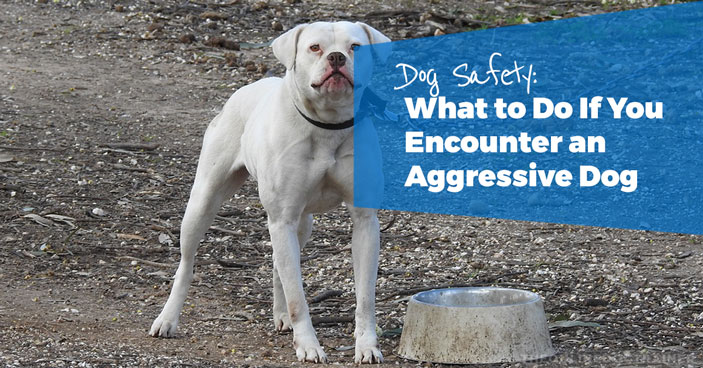
According to the Centers for Disease Control and Prevention, approximately 4.7 million dog bites occur in the United States each year.
Out of those 4.7 million bites, 800,000 of them result in the need for medical care.
According to these statistics, 1 out of every 69 people in the US has been bitten by a dog at least once in his or her life.
It’s likely that these statistics are shocking to you—especially if you own a laid-back, family-friendly dog who likes nothing more than to have his belly rubbed by strangers.
Yet, any time you’re around an animal—whether it be your happy-go-lucky Labrador Retriever or your neighbor's yappy Chihuahua—there’s the potential for an unexpected accident to happen.
As humans, we tend to blame the animal for any bite or scratch we may encounter. And sometimes—due to age, illness, or instinct—a dog may be completely at fault for an injury.
However, it usually takes two to tango.
And as a dog trainer, I know that there are hundreds, probably thousands, of dog attacks that never would have taken place if the humans involved in the accident knew how to handle the situation or read the warning signs sooner.
For that reason, I want to discuss a few safety tips specifically regarding what you should do if you ever find yourself in the path of an aggressive dog.
It’s my hope that you can use these skills to keep both yourself, and the dog at play, safe.
Here’s what you need to know…
Tip #1 – Avoid Confrontation at All Costs
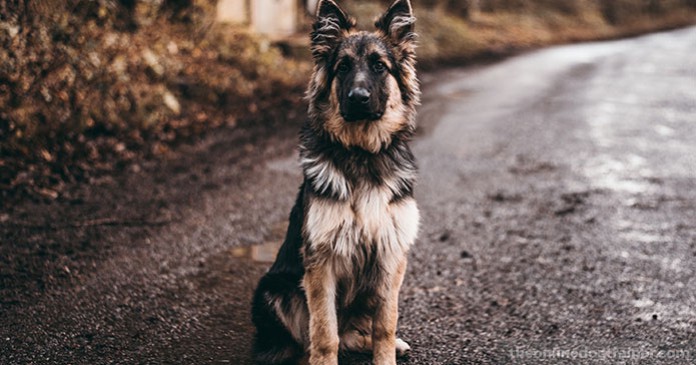
Imagine you’re walking down the street and, just down the road, you see a gang of rough-and-tumble men looking for a fight.
Unless you’re Chuck Norris, it’s unlikely you’re going to continue to walk down the street and put yourself in the middle of an unwanted situation.
Instead, you might…
- Turn around and go home until it’s safe to try again.
- Cross over to the other side of the street, away from trouble.
- Pick an alternative route that steers you clear from harm’s path.
The same logic should be applied if you come across an aggressive dog or a dog that intimidates you.
If you are far enough away from the animal, reconsider your route, and do your best to put as much distance between yourself and the dog as possible.
If you’re close to the dog, avoid eye contact, and mind your own business.
Eye contact can be seen as a threat and can often cause a dog to become aggressive as he feels the need to prove his dominance.
And, of course, it’s important to refocus your energy.
If you’re not looking for a fight and don’t put that kind of energy out there, you generally won’t get a fight.
Remember, dogs are very keen on picking up on your energy.
Remain claim, avoid eye contact, and make it clear that you have no desire to intrude on the dog’s territory; and he will likely leave you alone.
Tip #2 – Be Smart about Confrontation If You Have No Other Choice
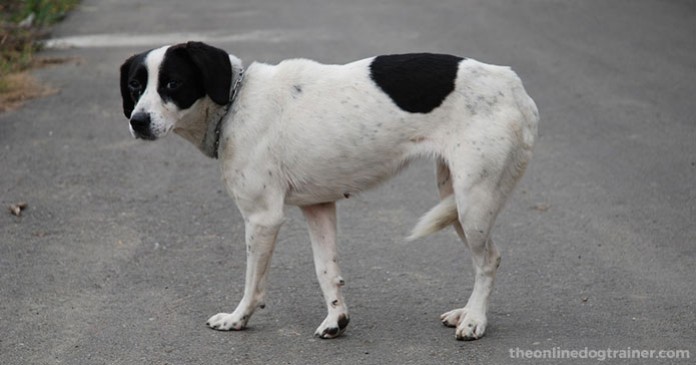
While not being confrontational is the best choice, you may find yourself in a situation where you have no other option but to stand your ground.
If you are certain that a dog coming toward you is going to keep moving near you and if this is the only choice you have, remember that confidence is key.
You need to do whatever you can to make the dog you’ve encountered think that you are bigger, stronger, and fiercer than he is.
For instance, clapping and making a lot of noise while staring at the dog might actually scare him.
To illustrate this point, check out this cool video below on how 3 men are able to scare off a pack of lions and steal their meat.
(Of course, I NEVER advise you to try anything like this. However, it’s amazing to watch how 3 guys can use body language to take nearly an entire antelope off a pack of lions.)
Human Planet – Men stealing meat from lions
Note: If you fast forward to 2 minutes and 45 seconds, the narrator will discuss the importance of confidence in situations like this.
The bottom line is that if you have no other choice, you’ve got to do everything in your power to prove you are not intimidated and are the more powerful “animal” in the situation.
Tip #3 – Use Things around You for Protection
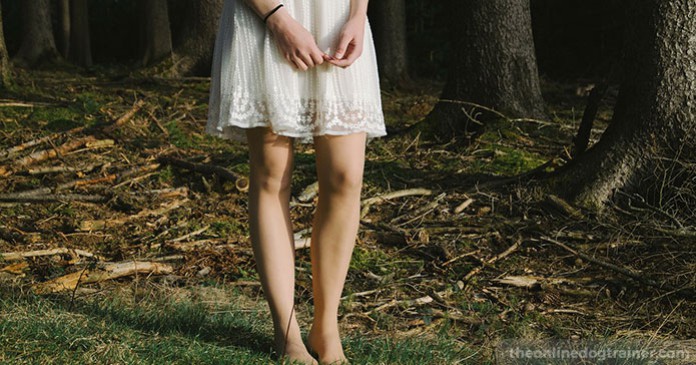
If you feel a dog is about to lunge at you, use objects around you for protection.
For example, if you are wearing a backpack, take it off, and use it as a “shield.” A dog is way more likely to bite a bag you hold out to block with than you.
If you’re outside, grab a big stick. More than likely the dog will choose to latch on to the stick instead of your arm or leg.
Climb a playset…
Use a metal trash can as a barricade…
Or climb a tree.
Use everything you can at your disposal to redirect a dog’s bite.
Tip #4 – Think Like a Dog
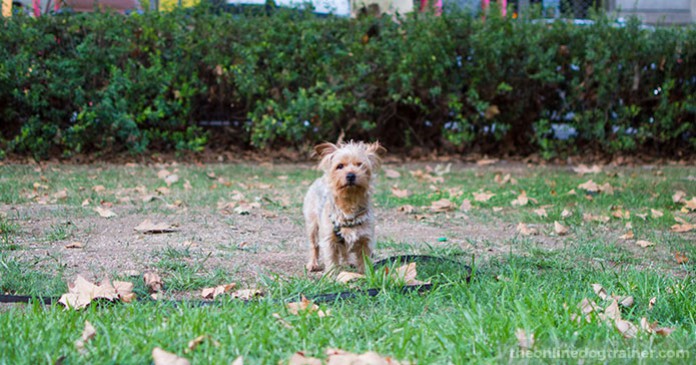
Most dogs aren’t aggressive for the sake of being mean or nasty.
In fact, an aggressive dog typically has an obvious reason as to why he’s acting in a defensive manner.
For example, the dog you come in contact with might be scared.
Think for a moment…are you trespassing on that dog’s property? Or might you be near something he’s trying to protect, such as a bone or puppies?
If this is the case, backing away from the dog slowly and picking a new path to take might be the solution to avoiding a dog attack.
Or maybe the dog you’ve come across is hungry.
Once again, this is a very logical reason a dog might be aggressive toward you.
If you have any snacks in your backpack or purse, it might make sense to throw them for the dog in order to put space between the both of you.
If this is the reason the dog is being aggressive, he will be much more likely to go after the food than you.
It’s not always easy to approach this type of situation in a calm manner. But if you’re able to take a minute to think about the reason behind why a dog might be aggressively approaching you, you might be able to find a solution to the problem that doesn’t end in violence.
Tip #5 – Be Prepared to Fight for Your Life
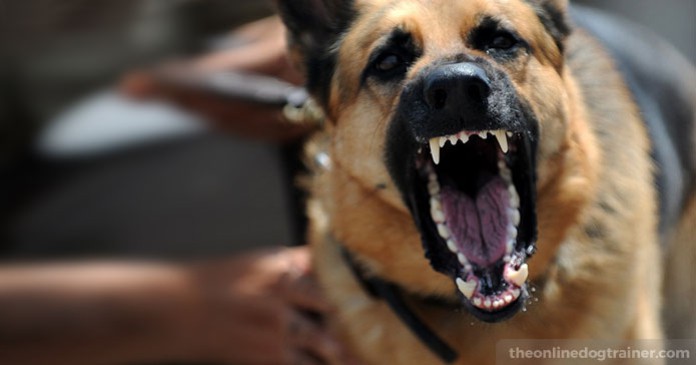
As a dog lover, I would never recommend that hurting an animal is the solution to any problem.
That being said, there are incredibly rare circumstances where you need to be prepared to fight back in order to save your life or a child's life.
If you’re being attacked by a dog, it’s vital that you fight back.
You can do this in several ways.
The first option is to physically fight back by holding the dog’s mouth away from you.
Do your best to use your body weight to secure the dog so he is unable to harm you until you’re able to get yourself to safety.
A dog’s ears and nose are very sensitive. If you’ve been bitten or a dog has bitten down on you (or a child) and won’t let go, pinch the dog’s nose. This will usually elicit a response for the dog to let go.
Second, if you live in an area where there are a lot of stray dogs roaming around, it’s a good idea to carry some form of pepper spray when you are out. The same type can be used on both humans and animals.
I prefer this option because it’s a more humane way to ensure the dog you come in contact with doesn’t get seriously injured.
Because dogs have such sensitive noses, I can almost guarantee that an aggressive dog would be turned off by the use of such a spray.
Last but not least, carry a high-pitched whistle that dogs don’t care for.
If you’ve got a dog moving toward you, a few blows into your dog whistle is often enough to discourage a dog from continuing to attack. Problem solved!
The Bottom Line on Encountering Aggressive Dogs
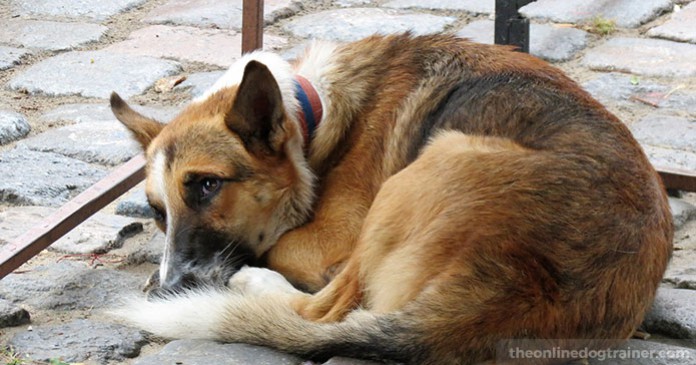
At the end of the day, it’s important to understand that dogs can be unpredictable and that it’s always vital to exercise caution when encountering a dog you don’t know.
While I hope these few tips I’ve shared would be useful in the event of an emergency, I can’t guarantee that they will always be 100% effective all the time.
The best way to ensure your safety is to always be prepared for an emergency and take practical steps to protect yourself, such as…
- Carrying pepper spray.
- Walking in groups when in an unfamiliar territory.
- Avoiding stray dogs, no matter how inviting they seem.
Most important, if you have a dog that has aggressive tendencies, it’s your responsibility to…
- Invest in proper training—check out my new program The Dog Calming Code, which will take the bite out of your dog's behavior.If you have a puppy, my Puppy Coach training program is also a great way to set a solid foundation for your pup.
- Provide a secure, fenced-in living space for him where he’s contained and can’t get loose.
- Place a safe and humane muzzle on him if you have people visiting your home.
While the chances of you encountering an aggressive dog are pretty slim, I want you to be prepared for any situation you might come across.
For that reason, I’ve developed a FREE guide that will help you identify whether a dog you’re around is aggressive or not.
To learn more about a dog's body language and how you can ensure you don’t provoke a grumpy dog,…
↓ Download the Guide here for FREE! ↓
Cheers,

~Doggy Dan


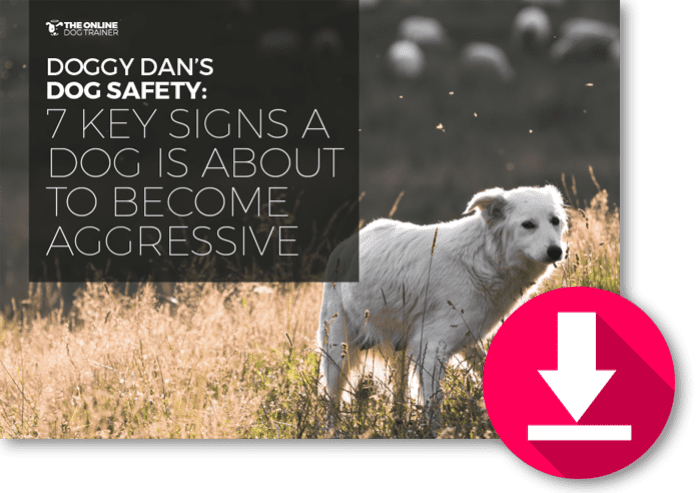


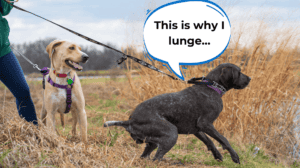
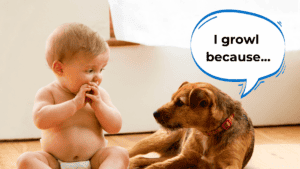
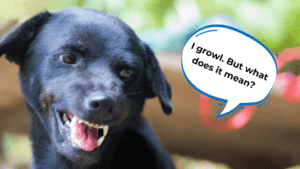
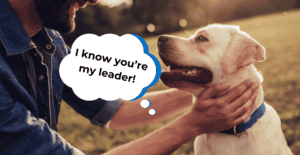
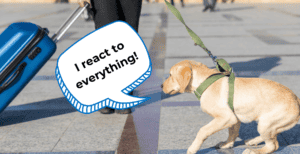
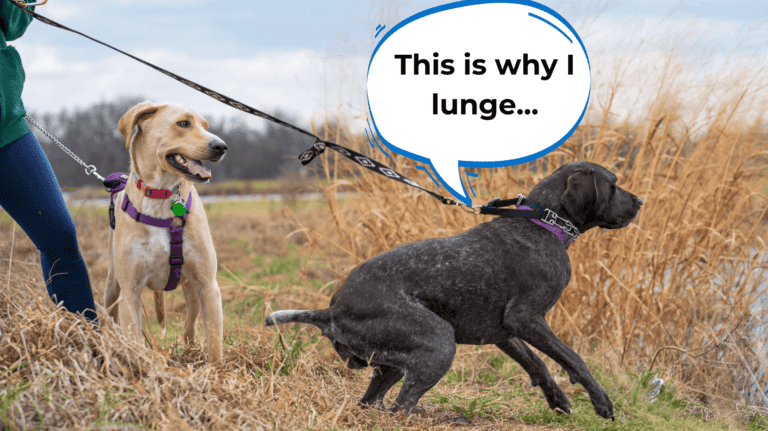
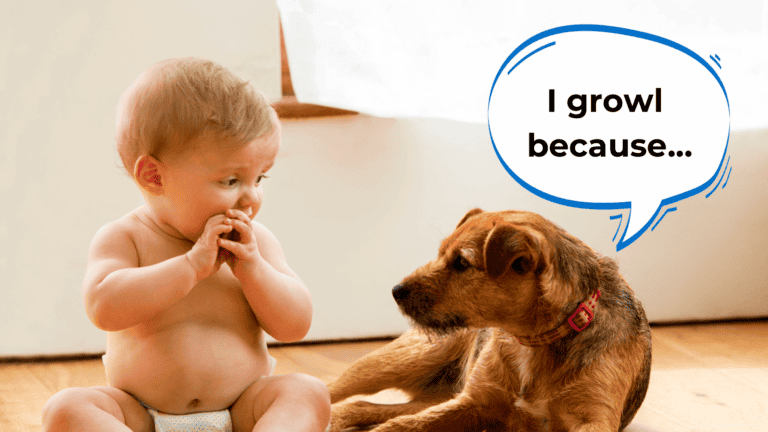
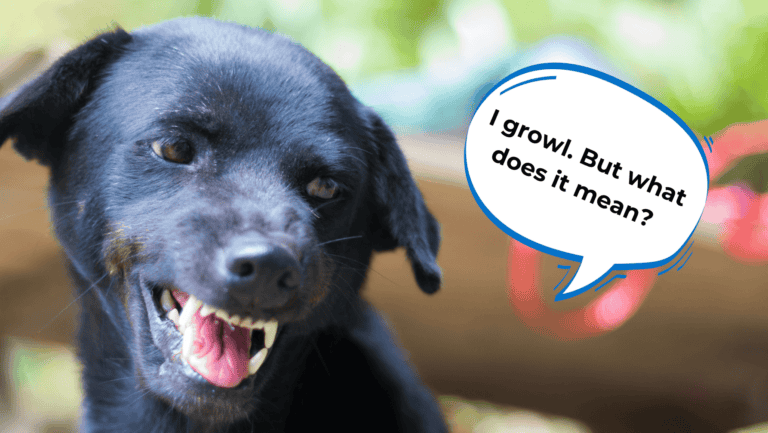

8 Responses
I have many times successfully used the techniques you outlined. However, I have been chased by loose dogs while riding my bike in town; I have been bit from behind on walks having had no idea dogs were in the area; while kneeling over a garage project I felt a sharp pain and saw my neighbor’s toy poodle running away; there have been dogs large and small fiercely attack fences/gates as I walk by way beyond a friendly warning bark; and once I landed in emergency having had others pull a dog off me.
I have had dogs since a child and owned/loved them for 65 years and mourned their passing. What triggers this seemingly senseless aggression?
Hi Jane,
Unfortunately not all dog owners have effective control of their dogs when they are off-leash! Dogs generally do view strange people and strange dogs as potential dangers that they may need to protect their family from, but that’s not to say all dogs will react aggressively. Some dogs, even if you don’t pose any real risk at all, just panic and over-react in the heat of the moment. Fast moving objects like bicycles, scooters and skateboards can also stimulate a dog’s excitement level and sense of urgency and again they can over-react. If I am confronted by a strange dog then one thing I do is avoid turning my back on them, but I also avoid making direct eye contact. If I need to I will very slowly back away from them but if I were to turn my back and walk away then this would allow them to feel more confident in ‘seeing my off’ with a nip or a bite! Stay safe! Doggy Dan
Dan, I have been fostering a dog for a month. He is a collie mix, 14 months old, neutered. very calm and friendly. We began taking him to the off leash dog park for a couple of weeks. He is friendly to everyone, gentle with the little dogs and wrestles and runs with the bigger dogs. All was well until yesterday when he saw a frisbee for the first time. He would not give it back, got into an angry tug of war and got his very snarly face on and we had to pull him away. He was good with us but snarling, growling and barking at the other dogs even as we left ?? Today (the next day) we took him to one dog park -he was fine, all little dogs. He ran and played and was gentle. We took him to another dog park. There was a male ‘alpha’ husky there and they got very snarly. The husky owner held her dog back and that was the time for us to get our dog together and leave, but a well meaning gentlemen said “It’s because you are holding him. Let him go. They’ll be fine”. They weren’t fine. they got locked into a snarling fight. I’ve been following your be the pack leader rules – how can I be the pack leader enough to keep us out of situations like that? From now on I intend to leave at the first snarly face because that is not common for him and is a signal of bad things ahead. Now I am determined to be consistent pack leader because I have to be able to handle that situation or he can’t go to the dog parks. Any suggestions?
Hi Dawn,
The best way to show a dog how you expect them to behave is to be very clear and consistent with how you respond to unwanted behaviour. If you are at the park and your dog starts to get a bit too excited then it would be a good idea to intervene before things escalate too much, maybe pop him back on the leash for a bit until he calms down. If he does calm down then you can allow him another chance to interact with the other dogs but if he again start to get too excited then place him back on-leash and perhaps make a judgement as to whether or not he and the other dog/s at the park are not a good mix to play with. Every dog is different and your dog will play happily with some and other he may find threatening or a bit too pushy for his liking. Being able to keep hi out of trouble means being able to look at the way he and other dogs are interacting and know when to intervene and maybe move onto another area.
If you do need to retrieve balls or a frisbee then make sure you take some high value treats in your pocket so you can exchange the food for the item. You could even teach him a ‘leave it’ command, at home first under a controlled environment, so that if this situation arises at the park then he already knows that ‘leaving it’ when you ask him to means he gets a good treat!
Lastly, trust your judgement…if you feel that a situation is going badly then do what you feel is best for your dog…no matter what anyone else at the park may advise you to do. Best, Doggy Dan
Our family dog bite my younger son last night , the dog is 4 years old male pit/lab mix . according to my young son he was trying to kis the dog in the face and hug the dog when suddenly the dog bite my son . our dog has never bite a human before , I love our dog but Im concerned for my kids safety now . my question is: should I get raid of the dog for safety? Thank you.
Hi Daniel,
Young children and dogs should always be supervised when they are together. I know as a parent we lead busy lives and adding another job to that list is the last thing we want BUT teaching our kids how to interact safely with our family pets is really important. When dogs are sleeping or resting they generally prefer to be left alone and even a well meaning cuddle or kiss from a child can take them by surprise and startling the dog. A growl is a warning that they want to be left alone and if this communication is ignored then a nip/bite may be the follow up.
Children should be taught to interact respectfully with dogs and not climb over them, pull their ears/tail or put the dog in situations they may not feel comfortable in. One thing I like to encourage children to do when they want to give their dog a cuddle or pat is to always call their dog to them to do that…..rather than approach their dog. This give their dog a choice in the interaction and if they don’t feel like participating then they generally won’t come when asked….and at this point the child should be taught to wait until another time and try again.
The safety of your child, and your dog, is always priority number one and so if you feel you are unable to supervise their interactions then you may need to consider whether your dog will be happier in another home. Best…Doggy Dan
Past months ago! my friend buy a bog and he is very aggressive and he tryed to “BIT” me and i get very scared at that time. Now for next time I will keep in mind all your tips.
I’m glad you found my Blog helpful Carol..stay safe! Doggy Dan